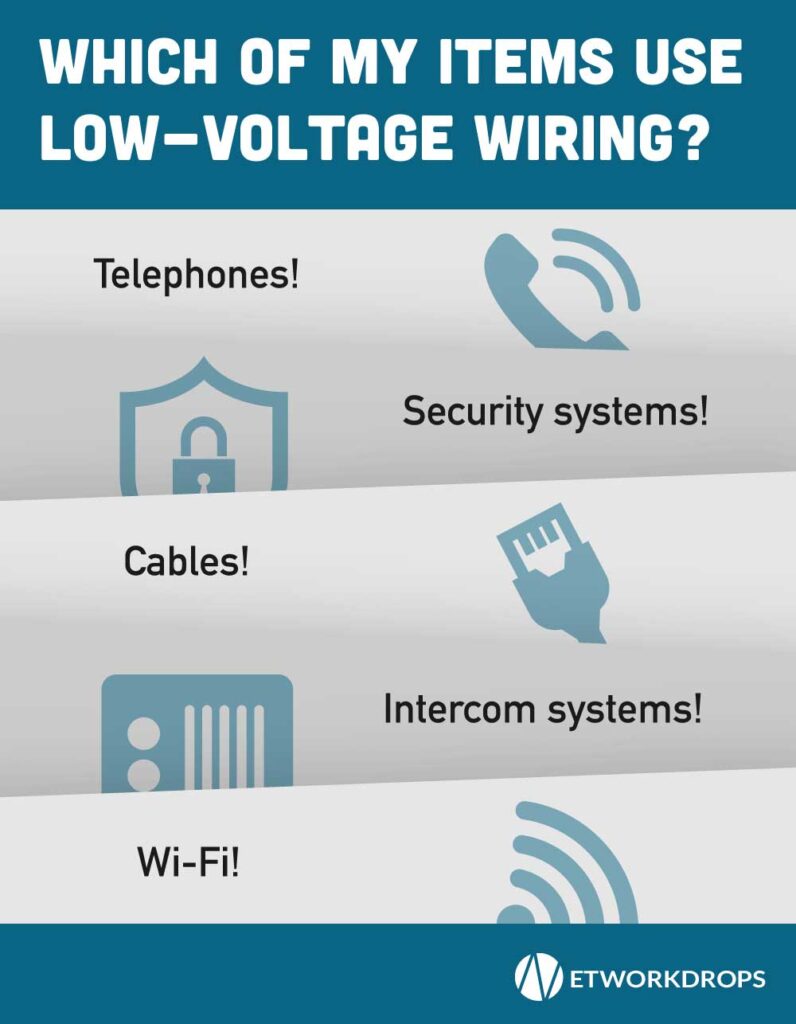When you open your company’s doors and start the work day, a long list of electrical devices comes on to help make your day easier. From the nice-to-haves like the coffee maker to the essentials like your phone systems and your wireless network, these devices help give your team the tools they need to serve your customers best. However, how do you know your electrical network is getting the energy it needs to power everything? That’s where low voltage wiring comes into play.
What Is Low Voltage Wiring?
Low-voltage wiring, in its simplest terms, is an electrical network used for digital communication and technological equipment, allowing devices to function at proper speeds and performances. It represents one of the most important aspects of any building, and most basic technical functions cannot be completed without it. If your facility hasn’t had its electrical system updated recently, you could be facing some inefficiencies in your system that should be addressed.
Some building managers might fancy themselves as budding electricians and believe they can handle rewiring your low voltage cables. However, installing this wiring — also known as structured wiring — is a job that should be left to professionals. If you need to set up structured wiring in Bucks County, PA, and the surrounding areas, leave it to the pros at Network Drops!
Now, if you’re confused about how exactly structured wiring works, you’re not alone. Understanding the ins and outs of this essential part of your building’s infrastructure can take years to learn. With that being said, you should have a basic understanding of how low voltage wiring works to help spot when there’s an issue. Here are some of the basic things to know about low-voltage wiring as it pertains to your everyday life.

How does it work?
Most outlets have wiring that runs 120V to 240V of electricity. While that is good for larger appliances and devices that require a more significant charge, not all devices need that much power. You can avoid putting too much energy into any device by installing low-voltage structured cabling systems. Anything under 50 volts is considered low-voltage and safer for office buildings.
During an inspection of your building, having low-voltage wiring in place will save you from scrutiny or low marks, as there is less of a risk of electrocution with these materials due to the voltage levels. As long as it is installed correctly — meaning not bending in certain angles and making sure there is enough slack on the wires — a structured cabling system can be the solution you need. It will relay information through the different systems in your building, allowing them to run at optimal speeds.
What is it used for?
Think about every piece of technology you regularly use in your home or office. It’s almost certain that a structured wiring system is powering it. Anything that requires communication from one machine to another will involve low-voltage wiring in some capacity, from phones to the internet to security systems.
Network Infrastructure
With your network powering your company’s communication abilities, having the right cable solutions can greatly boost your overall efficiency. Since these devices don’t require massive amounts of power to run, utilizing low-voltage wires can help optimize your system in ways you didn’t expect.
Phone Systems
Even in a world dominated by emails and text messages, fielding calls remains one of the most reliable ways to get leads and provide excellent customer service. Your phone system can operate on low-voltage cables to power your office’s phone banks effectively.
Laying Out the Low-Voltage Cables
Now that you have a basic understanding of how low-voltage cables work, you’ll want to know how you can properly lay them out in your building. As with any wiring solution for your office building, you need to have an idea of how you want them laid out.
Before laying the cables, you should know they share similarities to fiber-optic cables — they don’t bend. Changes in direction must be handled by forming loops in the wires, so your cable design should reflect that. The layout should give you enough space to place the cable comfortably within your walls but still give you easy access to update them in the future.
How do I get low-voltage wiring installed in my place of business?
If you have decided that your office building would benefit from a low-voltage structured cabling system, you have options available to make the upgrade a reality. While you can try to lay the cables out yourself, if there are problems with the installation, it could prove challenging to identify the source of the issue before it’s too late. Having professional installers come out and get the job done right the first time will help save you time and money in the long run.
Have an office building that needs a new electrical system? For all low-voltage wiring jobs and data cabling installations in Monmouth County, NJ, and throughout South Jersey, the way to ensure the best quality job is to turn to the services provided by Network Drops.
The experts on our staff are here to help you every step of the way and are knowledgeable about every component of network wiring and cabling systems. If you’re looking to set up structured wiring in your office, contact Network Drops today to receive a quote on your job and schedule your next appointment.

